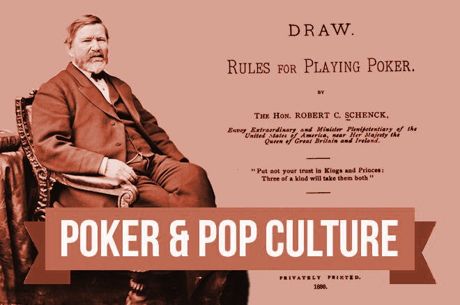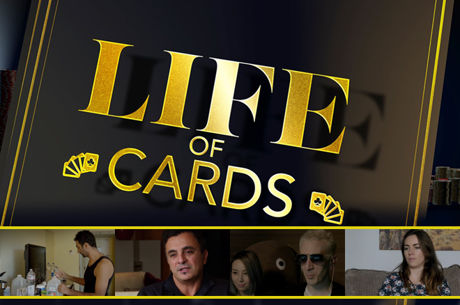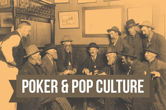Poker & Pop Culture: Strategy Books Telling How to Play, But Warning Not To

When it comes to books about poker strategy, we tend to think of them being written for a particular audience �� namely, poker players enthusiastic about the game and eager to learn how to win more often.
We also tend to think of the authors of such books as being primarily interested in teaching readers how to play the game more skillfully. Indeed, that may be the only purpose we would typically attribute to poker strategy writers �� to provide instruction to help readers play better poker.
That said, when looking back through some of the earliest poker strategy texts, we discover many authors not simply satisfied with telling readers how to play poker. They're also in various ways telling them not to play poker at all, or at least to enter into the game armed with a great deal of wariness and trepidation.
In other words, the appearance of these initial poker primers not only attests to the growing popularity of the game in the latter decades of the 19th century, but also communicates something significant about poker's uncertain place in the culture.
Several of the authors of some of the first books covering poker rules and strategy were consistently reluctant to be identified with works promoting what they themselves viewed to be a potentially harmful game.
A couple of weeks ago we discussed former United States Congressman Robert C. Schenck's early draw poker primer, originally published without his knowledge in 1872. For a later reprinting, Schenck added an "Author's Apology" in which he confessed being known as the book's author had "unwittingly brought down on me the wrath and reprehension of so many good people in America."
Then last week when discussing the 1875 title The Game of Draw Poker, Mathematically Illustrated by Henry T. Winterblossom �� a pseudonym used to hide the author's true identity �� we again saw the author making several disclaimers about the dangers of gambling, assuring his readers that not playing poker at all was a perfectly fine option, and that "their position in society will not be imperilled" should they give the game a pass.
Similarly did the author of a 1882 book titled Poker; How to Play It choose not to be identified by name. While sharing rules of the game, a bit of strategy advice, and some "amusing incidents" in the form of poker anecdotes, the author signed the work in a way that emphasized the harm the game could cause, calling himself "ONE OF ITS VICTIMS."
Here, briefly, are three other early poker books covering strategy that likewise teach both how to play the game and how readers might well be better off not playing at all.
John Blackbridge's The Complete Poker-Player (1875)
New York attorney John Blackbridge did sign his name to his 1875 book, The Complete Poker-Player: A Practical Guide Book to the American National Game. Blackbridge's book includes rules of the game (borrowed and adapted from "The American Hoyle") as well as some technical advice and discussion of odds, including a section breaking down "Probabilities at Draw-Poker."

Blackbridge also spends time defending poker against those who would object to it on moral grounds, comparing the honest and skillful poker player to those employed in more honorable professions such as banking or insurance.
That said, he delivers a stern warning regarding the preponderance of cheating in the game, and even goes so far as to consult with a "card-sharper" to learn about the many methods of cheating one was likely to encounter in a game among strangers.
The sharp teaches Blackbridge about holding out cards, dealing from the bottom, and other forms of deceit including how to invite a player to cut the deck, then replace it back as it originally was without being noticed.
"Much as this man told me, I am satisfied there was much he did not tell me," says Blackbridge, adding that in his interview "enough [was] disclosed to make honest card players very wary of the society of any man who habitually wins."
In other words, anyone who succeeds long term at poker is to be suspected, given the scarcity of "square" games. Thus does Blackbridge encourage his readers that if they must play, to stick with small stakes �� for two reasons. For one, "sharps will not play such a game" because the profits are too meager. Secondly, playing small "never leads to ill results" since the losses can never be too great.
Still, Blackbridge's choice of metaphor to describe the state of poker circa 1870s doesn't provide much encouragement to those wishing to take up the game.
"The visible boil upon the surface of the human body proves that there is invisible corruption within," writes Blackbridge, "and the occasional discovery of frauds at cards practiced by men who up to that time had been regarded as honorable, proves the existence of much undetected roguery."
Talk of Uncle George (1883)
Another anonymously produced poker volume appeared in 1883 called Talk of Uncle George to his nephew about draw poker, the long title of which concludes "with timely warnings to young players."
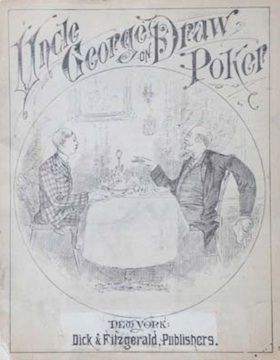
The Preface explicitly identifies the book's aim is not only to explain how draw poker is played (drawing on "Hoyle," Blackbridge, Schenck, and others as sources) and give some strategy-related pointers, but also "to show to the American youth the dangers that beset their path when playing this fascinating game."
Uncle George's stories cover a variety of situations, communicating numerous suggestions for winning play as well as thoughts regarding etiquette. There are also plenty of warnings against various forms of cheating, including collusion.
"My boy, your Uncle George must say that you stand a very poor chance of holding your own, and no chance of winning, if, in your party, there should be two or three playing, who are 'in together.'" Referring to the colluding players' signals, Uncle George warns they "have a sort of a telephono-graphosto kind of information, which, many times, it is impossible to detect."
The dialogue �� and book �� conclude with the nephew expressing gratitude and eagerness to go put his uncle's advice to use in the next game of his poker club. But Uncle George has one last recommendation to deliver first.
"I would advise you to quit the game entirely," he says. "From what I have said, you must see clearly that it has a great many more drawbacks than advantages. It has cost your Uncle George much money and time.... Nearly every day's paper has reports of ruined characters, caused by enjoying ' a little quiet game,' or ' a little game of draw.' It is impossible to keep those who have a predisposition to cheat out of the games, even of the most fashionable and respectable class of players."
"Therefore, I say, it would be better for you to quit it entirely."
William James Florence's The Handbook of Poker (1892)
Finally �� to highlight just one more of several late 19th-century titles �� comes The Gentleman's Hand-Book of Poker (1892) by William James Florence, who in the preface indicates he wrote the book in less than four weeks to satisfy a bet.
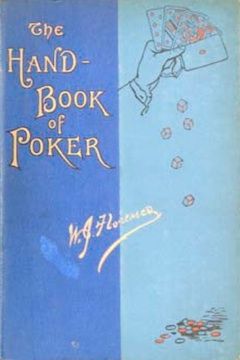
After discussing the historical background of rules of draw poker and then covering some other variants (stud, whisky), Florence offers similar warnings as do Blackbridge and "Uncle George" about sharps marking cards and using reflectors or small mirrors to see cards as they deal. To that he adds a summary of Schenck's rules, covers various terms and other facets of the game, shares some talk of position and probabilities, and offers other sound advice much of which still applies today.
"Steadiness in play often makes up for losses," writes Florence in a section titled "Pushing Your Luck." "Show no impatience. Remember that there is equalization of chances."
He also provides suggestions about bankroll management, encouraging the use of a "stop loss," although he doesn't employ the term ("To cut short your losses can be done only in one way... You are willing to lose $5; lose that and not another cent"). An essay on "Poker Principles and Chance Laws" contributed by Richard A. Proctor supplements the text along with more anecotes of poker.
But it's a section titled "Advice to Players" that once again delivers the most withering observation about poker �� and one that would seem to contradict the purpose of a book seemingly intended to promote the gaem.
"There are no rules for playing poker so as to win," Florence bluntly states. "Advice may be given so as to limit losses."
Like Blackbridge, he suggests that if you have to play to do so for small stakes and "never [to] play poker without a limit," because "it is then the most dangerous of games."
Conclusion
While the writers of these early poker primers were clearly supporters of the game and its growth, they were also acutely aware of how many viewed poker as a threat to individuals' well being and society as whole.
And in many cases they shared some of those misgivings themselves, as indicated by the caution they recommend to their readers when telling them either to play poker strictly recreationally for low stakes or perhaps skipping the game altogether.
From the forthcoming "Poker & Pop Culture: Telling the Story of America��s Favorite Card Game." Martin Harris teaches a course in "Poker in American Film and Culture" in the American Studies program at UNC-Charlotte.

